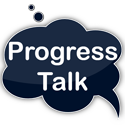If we want migrate the open edge form 10.2B to 12.8, how much down time is required?
There isn't a simple answer to this. It really depends on how your particular use of the OpenEdge platform: how the application is written, which OpenEdge products and components you use, whether you currently use any functionality that has been removed from the platform, whether you have access to source code and can compile your application, whether a database dump & load is required, etc.
I
would recommend upgrading directly to the latest release, 12.8. But you do have to do your homework and understand what is required, which won't all come from this forum.
It is important to note that in addition to the many new and changed features that have been added to OpenEdge in the fifteen years from 10.2B to 12.8, several things have been removed as well.
Some additional reading on that topic:
OE 12 is available
https://community.progress.com/s/article/What-products-and-features-were-removed-from-OpenEdge-12-0-and-subsequent-12-x-releases
v11 Platform Compatibility Guide:
https://docs.progress.com/bundle/OpenEdge-11-Platform-Compatibility-Guide/resource/OpenEdge-11-Platform-Compatibility-Guide.pdf
v12 Platform Compatibility Guide:
https://docs.progress.com/bundle/OpenEdge-12-Platform-Compatibility-Guide/resource/OpenEdge-12-Platform-Compatibility-Guide.pdf
Check the listings of the Desupported and Deprecated Features in the compatibility guides.
You should also familiarize yourself with what has been added to the platform since 10.2B. For all releases from 12.0 to 12.8, that is a straightforward process as it is all in one place:
https://docs.progress.com/bundle/openedge-whats-new/page/Whats-New-in-OpenEdge-12.8.html
This is also available as a downloadable PDF, which may be easier to search.
For releases 11.0 to 11.7, you will need to download the documentation set zip file for each release from the OpenEdge Documentation Archive (
https://docs.progress.com/category/openedge-archives), and then extract and read the New and Revised Features manual.
There has been some discussion here in the past of what may be required or recommended when upgrading across many releases, and especially across a major-version boundary. Some threads:
https://www.progresstalk.com/threads/does-anyone-have-a-demo-of-progress-database-migration.183440
Upgrade Questions 10.2B to 11.6 and OS Migration
Take time as part of your project to think not only about what you must do to upgrade, but also about what you should do, and what you can do. In the best-case scenario, your application and database configuration represent the best practices for v10 applications and databases, some of which are no longer best practices. And in the worst case, you might have a configuration that is far from best practices and require a database structure redesign and full dump and load, or other important but time-consuming maintenance. That would obviously affect your overall upgrade downtime.
You should certainly revisit the startup configuration of your database brokers and your OpenEdge application clients. And if you do decide to dump and load, you can make changes that are only possible, or at least feasible, during that process. Examples would be changing the characteristics (RPB, BPC) of areas that store very large objects, or changing the database block size.
As discussed in the other threads, an upgrade is also a suitable time to assess your licensing compliance, operational processes, and business-continuity preparedness. For example, are you not using after imaging in production? Or do you use it, but still only do AI log-shipping, and thus have a recovery-point objective measured in many minutes or hours, when in fact your business can only afford disaster-related data loss measured in seconds? If so, include such items as criteria for success in your upgrade project, and ensure you understand their dependencies. In the latter case, a dependency might be ensuring you have the budget to acquire product licenses for OpenEdge Replication Plus, as well as for the testing and training necessary to implement it successfully.
As you can see, there are no quick answers. You need to do the hard work of assessing and documenting where your organization is today in its use of OpenEdge, what the platform can do for you tomorrow, what your business needs and objectives are going forward, and how to get there.
